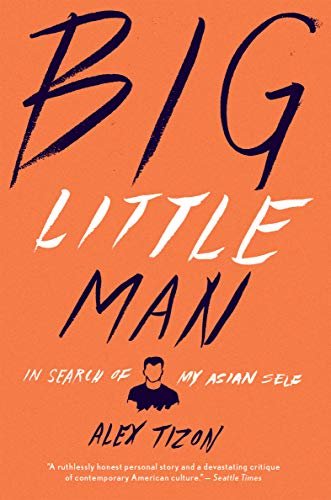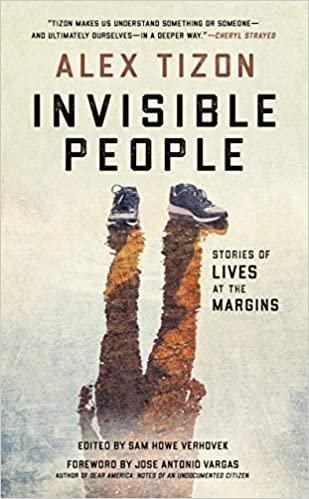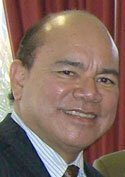Alex Tizon’s Heartbreak
/Alex Tizon’s “Big Little Man: In Search of My Asian Self”
A lesser known, but no less significant, work is his biographical memoir, Big Little Man: In Search of My Asian Self, published in 2014. The book acquires new relevance in light of the 500th anniversary of Magellan’s landing on our islands (and his untimely death at Lapulapu’s hand) in 1521 and the recent violent, racist assaults on Asian immigrants in the U.S. during the COVID pandemic. It also clues in Tizon’s other achievements as a national correspondent for the Los Angeles Times and staff writer for the Seattle Times. In 2020 his wife, Melissa, and a colleague Sam Howe Verhovek published a masterful summation of his works, Invisible People: Stories of Lives at the Margins.
Alex Tizon’s “Invisible People: Stories of Lives at the Margins.”
Poignantly, Tizon passed away just at the point when he was reaching the apex of recognition for his journalistic work. His last posthumously published essay, ironically on the day of his death, “My Family’s Slave,” attracted universal attention.
Tizon’s story about his “lola” in The Atlantic.
Alex Tizon’s family immigrated to the United States in the early wave beginning 1965, following President Lyndon B. Johnson’s legislation enabling non-Europeans (read, non-whites) to enter the U. S. in greater numbers as full-fledged immigrants.
On the surface, it would appear that his family was cut out for success as U.S. citizens. His father was a lawyer, his mother a doctor, and they had a full-time nanny for the children (whose searing story Tizon would later reveal in his tell-all “My Family’s Slave” in The Atlantic).
They had immigrated to the U.S. by way of their father’s job as a staff assistant at the Philippine Consulates in Los Angeles and Seattle. When his father resigned from this employment, the parents quickly acquired green cards enabling them to become U.S. citizens. Nevertheless, this was not enough to propel them into a life of ease and prosperity. One might speculate that a middle-class Filipino background then was not the best preparation for success as an immigrant.
One of the first indications of a cultural disconnect occurred on the Christmas Eve of 1964, when the whole family nearly died of carbon monoxide poisoning from an inadvertently closed chimney vent. Only by happenstance did the father wake up just in time to rescue his family. He prided himself on functioning even when he was tipsy or drunk, which allowed him this feat. But unfamiliarity with winter and with heating devices proved to be nearly their undoing. This incident landed the family in a six-paragraph article in the Seattle Times, with which Alex Tizon would later coincidentally become a national correspondent.
From what Tizon writes, the family was never able to find financial stability or to step down from the debt treadmill. His mother who diligently kept a daily journal for 52 years, would write:
“The bills keep piling high, and Papa and I don’t have fifty dollars to our name…Neither of us can sleep at night because we don’t know what will happen tomorrow.”
Gypsy-like, the family moved back and forth across the U.S. in U-haul trucks in search of a permanent abode and steady jobs for the parents. Tizon studied in as many as eight schools in 12 years. One ill-chosen environment for the children was the South Bronx, where they were exposed to decayed neighborhoods, mediocre schools, and bullying. By the time they settled in Oregon, their parents’ 25-year marriage had fallen apart and the children were adrift in an indifferent universe.
“Tizon’s “My Family’s Slave” was an eye-opener for not only Filipinos, but also other people throughout the world”
Financial ineptitude, non-access to sustainable credit, and cultural naivete coexisted with the parents’ respectable academic degrees, which in truth counted less or little in their new country. At times, the parents would take drudge work that would leave them exhausted and unable to attend to their own children. Unlike other Asians, the Tizons had no support group, neither did they recognize the value of their culture and languages. A colonial-minded Francisco Tizon would encourage his children to pinch their noses for an aquiline look and to do stretching exercises to become taller. Alex states:
“My father was the one most demoted in the great new land. He was supposed to be the man in the family and he did not know which levers to pull or push and he didn’t have the luxury of a lifetime, like his children, to learn them.
“My father, who was a funny, dynamic conversationalist in his own language, a man about Manila, would never be quite so funny or dynamic or quick-witted or agile or confident again. He would always be a small man in America.”
Possibly stemming from the parents’ attitudes, Alex Tizon regarded himself as belonging to a cultural backwater, while disdaining association with the Chinese or other “Orientals.” He had already concluded, as did his father, that “being Asian did not play in favor as a man, not in this land of giants.” Tizon does a good job of deconstructing the meaning of “yellow” as applied to Asians within the Orientalism best described by Edward Said.
The yardstick of the white man (and not, of course, the Black man) is what runs as a common theme throughout Tizon’s life. This naturally leads to a preoccupation with masculinity, color, height, and even penis size, as is recounted in various episodes in the book. In an interview, Tizon states:
“Everything I saw on TV, in the movies, in books corroborated the sense of Asian men being less manly, less masculine than other men. The struggle to belong is really what my book’s about.”
Corollary to this was the desirability of “Oriental women” to Caucasians. Asian women too viewed marriage with whites as a worthy goal. Once divorced, Tizon’s mother married a white man, as his sisters did. Tizon delves into the phenomenon of Philippine mail-order brides in his book, noting as well a long list of Asian celebrities married to American whites.
Eventually, Tizon would see the rise of Barack Obama as an alternative cultural model. The harassment that Tizon experienced and the murder in 1992 of the Chinese Vincent Chin (akin to the George Floyd murder today) in his teen years were early harbingers of the attacks on Asians during the pandemic of 2020-21.
His reading of Frantz Fanon and Frederick Douglass widened his knowledge of colonialism and racism, while Admiral Zheng Ho’s peregrinations in his Treasure Fleet reminded him of China’s early world explorations preceding Western ones. With Tizon’s macho obsession, he might have been unaware that Zheng Ho was indeed tall and well-built, and also a eunuch from the imperial court.
Equally, he seems not to have been aware of the Philippines’ post-independence leading role in Asia, its then robust economy and its top academic institutions that trained generations of Thais, Koreans and Indonesians. It might have surprised him to know that the Chinese were amahs to Filipinos instead of vice-versa.
Neither was he apparently acquainted with Filipino authors such as Nick Joaquin, Jose Garcia Villa, Carlos Bulosan, NVM Gonzalez, or even Jose Rizal, who might have bolstered his cultural confidence.
Growing up in the United States, he would hardly know Philippine history, as may be noted in his erroneous observation that “When the Spanish arrived, in the 1500s, they enslaved islanders and later brought African and Indian slaves.” (Invisible People, page 15).
His views on prehistoric Philippines as a slave society akin to Africa may be contested inasmuch as many indigenous groups existed, such as those in Batanes, the Mountain Province, and Mindanao that did not manifest the kinds of slavery he described. One important document, the 10th century Laguna Copperplate, in fact demonstrates release of one person from debt bondage. Following the precedent of Fray Bartolome de las Casas in Latin America, the colonial administration and the friar orders in the Philippines followed the Spanish ban on slavery.
Tizon tended to regard the Philippines with a jaundiced eye, as foreign tourists tend to do. He saw his driver, Doods, in Cebu as servile and sycophantic. However, he would also undergo an epiphany in a visit to Cebu and Mactan, where the explorer Magellan met his doom at the hands of native chieftain Lapulapu. Finally, he found a figure of whom he could be proud and whose features resembled his. He would even find other local culture heroes like the boxer Manny Pacquiao.
Tizon’s “My Family’s Slave” was an eye-opener for not only Filipinos, but also other people throughout the world. According to Sam Howe Verhovek in Invisible People:
(In) Chartbeat’s annual ranking of the hundred most popular digital articles, it also became the most read English-language article on the Internet for all of 2017, consuming fifty-eight million minutes of readers’ time…a year after Alex’s death, he won the National Magazine award, the most prestigious honor in the industry.
Almost too late, he as a second-generation American was able to achieve the glittering success that had eluded his father and mother as he made amends for the harm that his family had done to Lola. Tizon received opprobrium for his perceived personal involvement in Lola’s oppression, but also praise for his confessional piece. Naturally, he was unable to respond to these reactions since the article was published posthumously. By all accounts, he had tried to be fair to Lola, whom he had come to love as a second mother. As a child, he would have been unable to defend her against his parents. Despite his own best efforts, an international public would fail to understand cultural context of this tangled web of exploitation. Ironically, Alex’s family was slave to the American dream as well, for which they dearly paid.
Tizon would arrive at a point of understanding his father in Chapter 12 (“What Men Are Supposed to Do.”) He finally understood that his father had also come from tough circumstances, in which six of his own siblings had passed away in their youth; that he had survived the Second World War; and that he had witnessed the rape of a woman who had rescued him during that time. Coming to America, therefore, seemed like a second chance to achieve what had eluded his father back home.
“I’ve thought about him more often than I did when he was alive. I’ve thought about our last conversations in those months before his presence diminished to mere breath and bone, and he could no longer hear me. I wish I had told him that the circumstances of his life and much of what he did were not entirely his fault. Bahala na. Mahal kita. He did the best he could. In the ways that really mattered, he was enough.”
Looking at Alex Tizon’s photo, one can almost imagine that he must have mirrored his father. The invisible has finally become visible.
Alex Tizon
A coda that must be added to Tizon’s work is the new perceived image of the Asian (and not “Oriental”) that exists with the success of Chinese, Korean, and Philippine role models in art, cinema, sports, literature, and cuisine. These include LGBTQ personalities, which Tizon does not touch on in his work. However, alongside such progress is the continuing racism against Asians, which has awakened Philippine community activism. Alex Tizon would have been proud.
A career diplomat of 35 years, Ambassador Virgilio A. Reyes, Jr. served as Philippine Ambassador to South Africa (2003-2009) and Italy (2011-2014), his last posting before he retired. He is now engaged in writing, traveling, and is dedicated to cultural heritage projects.
More articles by Ambassador Virgilio Reyes, Jr.







